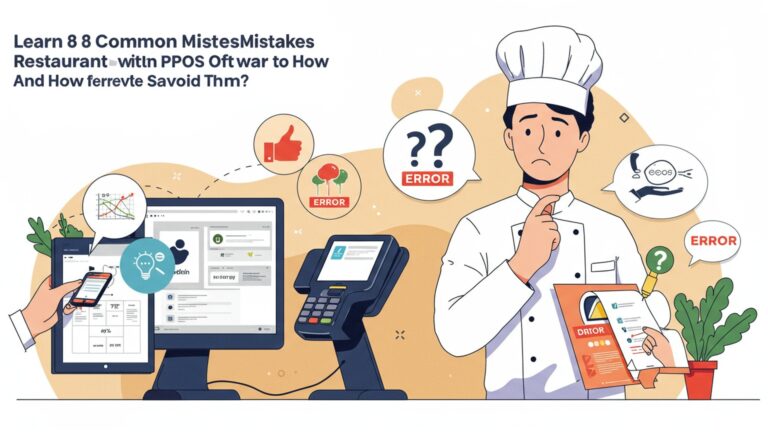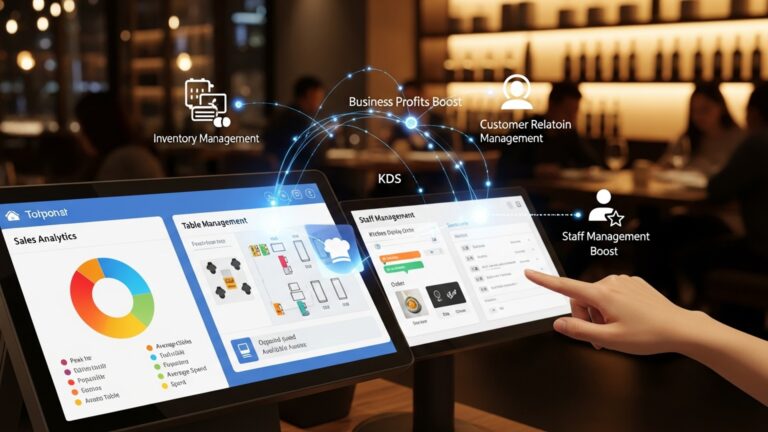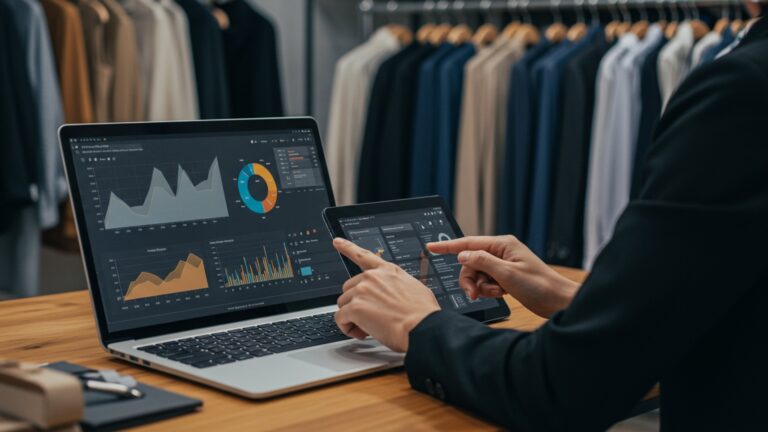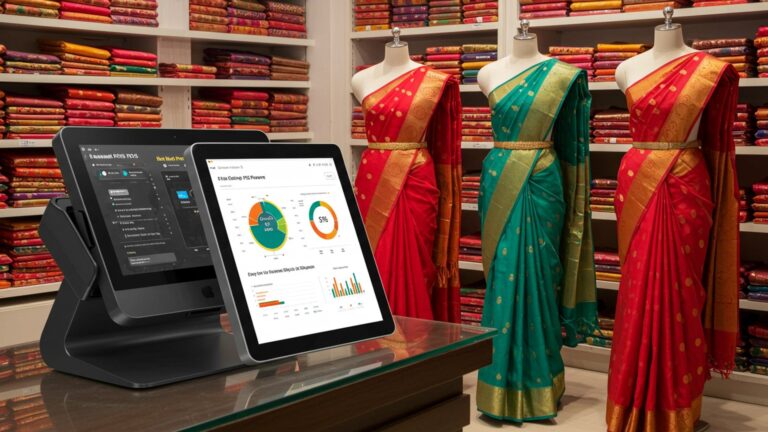Guide to the 10 Cheapest POS Software for Grocery Store Owners
Grocery store owners navigate a landscape of razor-thin margins, making judicious investment in operational technology paramount. Securing the cheapest POS software for grocery operations, while essential for budget control, historically meant sacrificing critical features like robust inventory management, integrated customer loyalty programs, or comprehensive sales analytics. But, recent advancements in cloud-based, subscription-model POS systems have fundamentally shifted this paradigm. These modern, cost-effective platforms now empower small to medium-sized grocery businesses to streamline checkout efficiency, optimize stock levels with real-time data. gain actionable insights into purchasing trends, ultimately enhancing profitability and the overall customer experience without significant upfront capital expenditure.
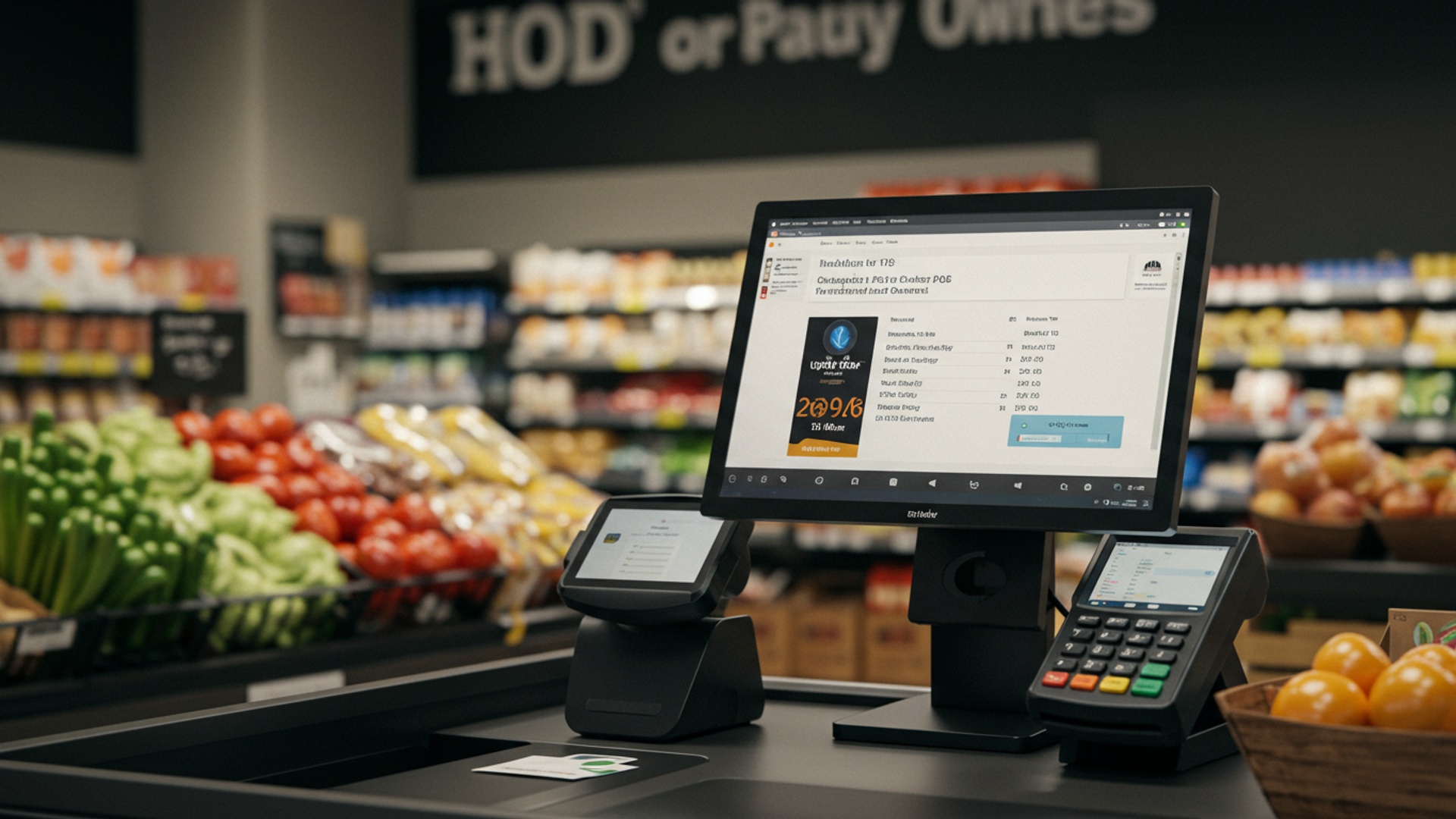
Understanding Point-of-Sale (POS) Systems for Grocery Stores
In the fast-paced world of retail, particularly within the grocery sector, a robust Point-of-Sale (POS) system is no longer a luxury but a fundamental necessity. At its core, a POS system is the central hub where all sales transactions are processed. But, for a grocery store, its functionality extends far beyond simply ringing up sales. It’s a sophisticated tool designed to streamline operations, enhance customer experience. provide critical business insights.
Imagine a bustling grocery store: customers are moving quickly, items need to be scanned efficiently. inventory must be accurate to prevent stockouts of popular products. A modern grocery POS system addresses these challenges head-on. It integrates various functions, including:
- Sales Processing: Quickly scanning barcodes, weighing produce, applying discounts. processing diverse payment methods (cash, credit/debit cards, mobile payments).
- Inventory Management: Tracking product levels in real-time, automating reorder alerts, managing multiple suppliers. handling variations like size, color, or weight. This is crucial for perishable goods.
- Customer Relationship Management (CRM): Collecting customer data, managing loyalty programs. offering personalized promotions to encourage repeat business.
- Reporting and Analytics: Generating detailed reports on sales trends, popular products, employee performance. peak hours, enabling data-driven decisions.
- Employee Management: Tracking employee hours, managing permissions. monitoring sales performance.
- Hardware Integration: Seamlessly connecting with essential hardware like barcode scanners, receipt printers, cash drawers. specialized scales for produce.
For grocery store owners, the right POS system means faster checkout lines, reduced human error, better inventory control leading to less waste. valuable data to optimize business strategies. It transforms a simple transaction point into a powerful operational and analytical tool.
Why “Cheapest” Matters: Balancing Cost and Functionality for Grocers
When selecting a POS system, especially for independent grocery stores or small chains, cost is often a primary concern. The term “cheapest POS software for grocery” isn’t just about the lowest sticker price; it encompasses the total cost of ownership, including subscription fees, transaction fees, hardware costs. potential hidden charges. Understanding these components is vital for making a financially sound decision without compromising essential functionality.
There are several common pricing models for POS software:
- Free Tiers with Transaction Fees: Some providers offer a basic software package for free, earning revenue through a percentage of each transaction processed through their integrated payment processor. This can be very attractive for businesses with lower sales volumes. fees can accumulate as sales grow.
- Subscription-Based Models: The most common model, where businesses pay a recurring monthly or annual fee for software access. Tiers usually exist, offering more features at higher price points. These plans often come with lower, or even flat-rate, payment processing fees.
- One-Time Purchase (On-Premise): Less common for cloud-based systems. some older or specialized software might offer a perpetual license. This typically involves a higher upfront cost but no ongoing software subscription, though maintenance and update fees might apply.
- Open Source Solutions: Software that is free to use and modify. While the software itself has no direct cost, implementing and maintaining it often requires technical expertise or paid support, which can add to expenses.
For a grocery store owner, the challenge is to find the cheapest POS software for grocery that still delivers on core requirements like fast checkout, efficient inventory management for perishable goods. robust reporting. A system that saves money upfront but causes operational bottlenecks or lacks crucial features can end up costing more in lost sales, wasted inventory, or employee inefficiency in the long run. Therefore, “cheapest” should be interpreted as “most cost-effective” – a balance of affordability and essential capabilities tailored to the grocery environment.
Key Features a Grocery Store POS Needs
Selecting the right POS system for a grocery store requires a keen eye on specific features that address the unique demands of the business. Beyond basic sales processing, an effective system must streamline operations, manage complex inventory. enhance the customer experience. Here are the essential features every grocery store owner should prioritize:
- Fast and Intuitive Checkout:
- Barcode Scanning: Essential for quick and accurate item identification.
- Weight Scale Integration: Seamlessly connects with digital scales for produce, bulk items. deli products, calculating prices automatically.
- Quick Keys/Hot Keys: For frequently sold items without barcodes (e. g. , fresh bread, specific produce types).
- Split Payments: Allowing customers to pay with multiple methods or split bills.
- Returns and Exchanges: Efficient processing of returns, refunds. store credit.
- Robust Inventory Management:
- Real-time Tracking: Monitoring stock levels across multiple departments or even locations.
- Variant Management: Handling different sizes, brands, or types of the same product.
- Automated Reordering: Setting minimum stock levels to trigger purchase orders automatically.
- Supplier Management: Tracking vendor details, purchase orders. receiving inventory.
- Perishable Goods Management: Tools for tracking expiration dates or first-in, first-out (FIFO) inventory methods to minimize waste.
- Customer Management and Loyalty:
- Customer Database: Storing contact data, purchase history. preferences.
- Loyalty Programs: Integrated points systems, discounts, or special offers for repeat customers.
- Personalized Marketing: Ability to segment customers for targeted promotions.
- Detailed Reporting and Analytics:
- Sales Reports: Daily, weekly, monthly sales, best-selling products. peak hours.
- Inventory Reports: Stock levels, slow-moving items. inventory valuation.
- Employee Performance: Tracking individual sales, clock-in/out times.
- Profitability Reports: Gross margin analysis for individual products or categories.
- Payment Processing Integration:
- Multiple Payment Options: Accepting credit/debit cards, contactless payments (NFC), mobile wallets. gift cards.
- Secure Transactions: EMV compliance and PCI DSS security standards.
- Integrated vs. Standalone: Integrated processing saves time and reduces errors.
- Hardware Compatibility:
- Barcode Scanners: Essential for rapid item entry.
- Receipt Printers: Thermal or impact printers.
- Cash Drawers: Secure storage for cash transactions.
- Customer-Facing Displays: Showing itemized totals to customers.
- Label Printers: For printing shelf labels or custom item labels.
- Scalability and Support:
- Multi-Store Capability: For grocers planning to expand.
- 24/7 Customer Support: Critical for troubleshooting during peak business hours.
- Cloud-Based Access: Managing the business from anywhere.
Prioritizing these features ensures that even the cheapest POS software for grocery can effectively support daily operations and contribute to long-term success.
Our Top 10 Picks for Cheapest POS Software for Grocery Stores
Finding affordable POS software that doesn’t compromise on essential grocery store functionalities can be a challenge. Here, we’ve compiled a list of 10 cost-effective POS solutions that are well-suited for grocery environments, detailing their key features and pricing models. Please note that pricing can change. it’s always best to check the provider’s website for the most current details.
1. Loyverse POS
- Overview: Loyverse offers a popular free POS app that runs on Android and iOS devices, making it an excellent entry point for small grocery stores. It’s known for its user-friendly interface and robust feature set for a free solution.
- Key Grocery Features: Inventory management, barcode scanning, item modifiers (e. g. , for weighed items), customer loyalty programs, sales analytics. employee management. It also supports integration with kitchen display systems (KDS) which can be adapted for deli/bakery counters.
- Pricing: The core POS software is free. Advanced features like advanced inventory, employee management. integrations (e. g. , QuickBooks) are available through paid add-ons, starting from around $5-$25 per month per feature. Payment processing is separate, allowing you to choose your own provider.
- Pros: Truly free core POS, intuitive interface, works on existing tablets/smartphones, good for small-scale operations.
- Cons: Advanced features require paid add-ons, support might be limited for free users, not ideal for very large inventories or multi-store operations without upgrades.
2. Imonggo
- Overview: Imonggo is a cloud-based POS system designed for small to medium-sized businesses, offering a free plan for single-user, single-store operations. It’s known for its simplicity and ease of use.
- Key Grocery Features: Basic inventory management, barcode scanning, sales reporting, customer management. offline mode. It allows for quick product setup and transaction processing.
- Pricing: Offers a free plan for up to 1,000 transactions and 1,000 products per month, with one user and one branch. Paid plans start from around $30 per month per branch, offering unlimited transactions and products. more users.
- Pros: Great free plan for very small grocers, simple interface, cloud-based access.
- Cons: Free plan has transaction/product limits, advanced features are behind a paywall, less robust inventory than some competitors.
3. Square POS
- Overview: Square is widely recognized for its user-friendly interface and integrated payment processing. While often associated with cafes and small boutiques, Square’s Retail POS offering (or even the standard POS) can be adapted for grocery use, especially for smaller stores.
- Key Grocery Features: Barcode scanning, inventory management (with Square for Retail), customer directory, loyalty programs, detailed reporting. support for various hardware including scales (via integrations). The “Retail” version offers more advanced inventory features suitable for grocery.
- Pricing: The basic Square POS software is free, with payment processing fees starting around 2. 6% + 10¢ per tap, dip, or swipe. Square for Retail (with more grocery-specific features) starts at $60 per month per location, plus processing fees.
- Pros: Free basic software, excellent integrated payment processing, intuitive, vast ecosystem of hardware and integrations, good for growing businesses.
- Cons: Processing fees can add up, Square for Retail plan can become pricey for its advanced features, hardware is proprietary.
4. Zettle by PayPal
- Overview: Similar to Square, Zettle by PayPal offers a free POS app that works with their card readers, making it an accessible option for small grocery businesses seeking an easy-to-use payment and sales management solution.
- Key Grocery Features: Product library, barcode scanning, inventory tracking (basic), sales reporting. customer receipts. It’s designed for quick transactions and mobile flexibility.
- Pricing: Free POS app, with transaction fees typically around 2. 29% + 9¢ per transaction. Card readers are purchased separately.
- Pros: Free app, simple setup, strong PayPal integration, good for mobile and quick sales.
- Cons: Basic inventory features, less comprehensive than dedicated grocery POS systems, primarily focused on payments.
5. Epos Now
- Overview: Epos Now offers a comprehensive cloud-based POS system suitable for various retail environments, including grocery. They have tiered pricing that makes it accessible for smaller businesses while offering scalability.
- Key Grocery Features: Advanced inventory management (including variants and reorder levels), barcode scanning, customer management, loyalty features, detailed reporting. integration with scales and other peripherals.
- Pricing: Software starts from around $39 per month (billed annually), with options for higher tiers that include more features and support. Hardware bundles are also available.
- Pros: Scalable, strong feature set for inventory and reporting, good customer support, suitable for growing stores.
- Cons: Monthly fees can add up, some essential features might be in higher tiers, hardware can be an additional cost.
6. Odoo POS (Community Edition)
- Overview: Odoo offers a suite of open-source business management tools, including a robust POS system. The Community Edition is free to use, making it an incredibly flexible and potentially cheapest POS software for grocery if you have the technical expertise or are willing to invest in implementation.
- Key Grocery Features: Comprehensive inventory management, multi-store capabilities, barcode scanning, customer loyalty, advanced reporting. integration with other Odoo modules (CRM, accounting, e-commerce). Offline mode is also available.
- Pricing: The Odoo Community Edition is free. But, hosting, implementation, customization. support typically incur costs, either through internal IT resources or hiring an Odoo partner. The Enterprise Edition (cloud-hosted with more features and support) starts from around $25 per user per month.
- Pros: Highly customizable, feature-rich (even in community edition), no software licensing fees, strong community support.
- Cons: Requires technical expertise for setup and maintenance, significant upfront investment if hiring for implementation, not a “plug-and-play” solution.
7. Erply
- Overview: Erply is a robust cloud-based POS and retail management system that caters to businesses of all sizes. They offer various plans, including more affordable options for smaller grocery stores.
- Key Grocery Features: Advanced inventory management (batch tracking, serial numbers, multi-location), CRM, loyalty programs, employee management, robust reporting. extensive hardware compatibility.
- Pricing: Plans start from around $39 per month for a single register, with higher tiers offering more features and registers. Custom quotes are available for larger businesses.
- Pros: Powerful inventory features, scalable, good for growing businesses, comprehensive retail management.
- Cons: Can be complex to set up, pricing can increase with added features and registers, potentially overkill for very small operations.
8. Korona POS
- Overview: Korona POS is known for its comprehensive feature set, particularly strong in inventory management and ticketing, making it suitable for grocery stores with a diverse product range. They offer competitive pricing for their entry-level plans.
- Key Grocery Features: Robust inventory management (including matrix inventory, batch tracking, expiration dates), vendor management, loyalty programs, detailed reporting. integration with various hardware including scales.
- Pricing: Starts from around $49 per month per terminal for the basic plan, with higher tiers offering more advanced features like e-commerce integration and enhanced reporting.
- Pros: Excellent inventory control features crucial for groceries, strong reporting, scalable, good customer support.
- Cons: Higher starting price than some “free” options, interface might have a steeper learning curve for some users.
9. Shopify POS Lite (as part of a Basic Shopify Plan)
- Overview: While primarily an e-commerce platform, Shopify offers a robust POS system. Shopify POS Lite is included with all Shopify plans, making it an accessible option if you already have or plan to have an online store alongside your physical grocery.
- Key Grocery Features: Unified inventory management (online and in-store), barcode scanning, customer profiles, basic reporting. support for essential POS hardware. The integration with an online store is a major advantage for grocers offering local delivery or pickup.
- Pricing: Shopify Basic plan starts at $39 per month (billed annually), which includes Shopify POS Lite. Transaction fees apply if not using Shopify Payments (or even with Shopify Payments, for other payment gateways). Shopify Payments fees are competitive, typically around 2. 9% + 30¢ for online and 2. 7% for in-person.
- Pros: Seamless integration with an online store, strong e-commerce capabilities, user-friendly, scalable.
- Cons: Requires a Shopify subscription, not purely a standalone free POS, advanced POS features (Shopify POS Pro) cost extra.
10. Hike POS
- Overview: Hike POS is a cloud-based retail POS system that offers a good balance of features and affordability, suitable for small to medium-sized grocery stores looking for a comprehensive solution without a huge upfront investment.
- Key Grocery Features: Real-time inventory management, barcode scanning, customer loyalty, gift cards, multi-store management, detailed sales reporting. integration with e-commerce platforms like Shopify and WooCommerce.
- Pricing: Plans typically start from around $59 per month (billed annually) for a single register, with higher tiers offering more registers and advanced features.
- Pros: Comprehensive feature set, good for multi-store management, strong e-commerce integrations, user-friendly interface.
- Cons: Not as cheap as the “free” options, some advanced features are in higher-priced plans.
Comparative Analysis of Budget-Friendly POS Options
To help grocery store owners visualize the differences between these affordable POS solutions, here’s a comparative table highlighting key features and approximate pricing models. This will assist in identifying the cheapest POS software for grocery that aligns with specific business needs.
| POS Software | Starting Price (Approx.) | Key Grocery Features | Inventory Management | Customer Loyalty | Payment Processing | Hardware Compatibility | Best For |
|---|---|---|---|---|---|---|---|
| Loyverse POS | Free (core app), add-ons $5-$25/month | Barcode scanning, item modifiers, employee management | Good (with add-ons) | Yes | Choose your own | iOS/Android devices, basic peripherals | Very small grocers, budget-conscious startups |
| Imonggo | Free (limited), Paid from $30/month | Barcode scanning, sales reports, offline mode | Basic | Yes | Choose your own | Web-based, basic peripherals | Small grocers with low transaction volume |
| Square POS | Free (standard POS), $60/month (Retail) + fees | Barcode scanning, item variants, loyalty, detailed reporting | Good (especially Retail version) | Yes | Integrated (2. 6% + 10¢) | Square hardware, some third-party | Small to medium grocers needing integrated payments |
| Zettle by PayPal | Free (app) + fees | Product library, barcode scanning, sales reporting | Basic | No built-in | Integrated (2. 29% + 9¢) | Zettle card readers | Mobile grocers, farmers’ markets, very small shops |
| Epos Now | From $39/month (billed annually) | Advanced inventory, customer management, loyalty, scales integration | Very Good | Yes | Integrated or third-party | Extensive (scales, scanners, printers) | Growing small to medium grocers |
| Odoo POS (Community) | Free (software), implementation costs vary | Comprehensive inventory, multi-store, loyalty, CRM integration | Excellent | Yes | Wide range (open source flexibility) | Tech-savvy grocers, those needing deep customization | |
| Erply | From $39/month (single register) | Advanced inventory, CRM, loyalty, employee management | Excellent | Yes | Extensive (scales, scanners, printers) | Medium-sized grocers, multi-location potential | |
| Korona POS | From $49/month (per terminal) | Robust inventory (expiration dates, matrix), vendor management, loyalty | Excellent | Yes | Extensive (scales, scanners, printers) | Grocers with complex inventory needs, delis | |
| Shopify POS Lite | Included with Shopify Basic ($39/month, billed annually) | Unified inventory (online/offline), barcode scanning, customer profiles | Good | Yes | Shopify hardware, some third-party | Grocers with an existing or planned online store | |
| Hike POS | From $59/month (billed annually) | Real-time inventory, multi-store, loyalty, e-commerce integration | Very Good | Yes | Wide range | Growing small to medium grocers wanting e-commerce sync |
Note: All pricing is approximate and subject to change. It’s crucial to visit each provider’s official website for the most accurate and up-to-date insights, including specific features offered at each pricing tier.
Making the Right Choice: Beyond the Price Tag
While finding the cheapest POS software for grocery is a priority, the initial cost is only one piece of the puzzle. A truly savvy grocery store owner understands that the long-term value and operational efficiency provided by a POS system often outweigh minor differences in monthly fees. Here are crucial factors to consider that go beyond the sticker price, ensuring you choose a system that will grow with your business and truly serve its needs.
1. Scalability for Growth
Your grocery store might be small today. what if you expand? Will your chosen POS system be able to handle increased inventory, more employees, additional registers, or even multiple store locations? Look for systems that offer tiered plans or modular add-ons that allow you to upgrade features as your business grows without having to switch systems entirely. A system that can scale means less disruption and retraining in the future.
For example, a small grocer starting with Loyverse’s free plan might find it perfect for a single register. But, if they expand to two registers and need advanced inventory, they’ll appreciate that Loyverse offers paid add-ons rather than forcing a complete system migration. Similarly, systems like Epos Now or Erply are designed with scalability in mind, offering multi-store capabilities in higher-tier plans.
2. Quality of Customer Support
When a POS system goes down during peak hours, it can lead to lost sales and frustrated customers. Reliable customer support is non-negotiable for a grocery store. Investigate the type of support offered:
- Availability: Is it 24/7, or only during business hours?
- Channels: Phone, email, live chat, knowledge base?
- Response Time: How quickly do they typically resolve issues?
Even the cheapest POS software for grocery should offer a basic level of responsive support. Reading user reviews about support quality can provide valuable insights. A system that saves you a few dollars but leaves you stranded during a technical glitch is not truly cheap in the long run.
3. Ease of Use and Training
Grocery staff often includes part-time employees or those with varying levels of tech proficiency. An intuitive, easy-to-learn POS system reduces training time, minimizes errors. speeds up checkout. Look for systems with clean interfaces, logical workflows. clear visual cues. Some providers offer free demo accounts or trial periods, which are excellent opportunities to test the system’s usability with your team.
// Example of a simple POS workflow for a grocery cashier 1. Scan Item Barcode 2. Enter Quantity (if multiple of same item) or Weight (if applicable) 3. Repeat for all items 4. Apply Discount/Loyalty (if applicable) 5. Select Payment Method (Cash/Card/Mobile) 6. Process Payment 7. Print Receipt
This kind of straightforward process is what you should aim for to keep lines moving.
4. Hardware Compatibility and Costs
While software might be cheap, hardware can add significant costs. Consider if the software is compatible with existing hardware (scanners, printers, cash drawers) you might already own, or if it requires proprietary equipment. Some systems, like Square, often work best with their own hardware, which can be an upfront investment. Others, like Loyverse or Imonggo, are very flexible and can run on standard tablets and integrate with a wider range of generic peripherals.
Factor in the cost of:
- Card readers (EMV and contactless)
- Barcode scanners (handheld or integrated counter scanners)
- Receipt printers (thermal)
- Cash drawers
- Customer-facing displays
- Weight scales (crucial for produce, deli, bulk items)
5. Integration with Other Business Tools
A truly powerful POS system doesn’t operate in a vacuum. It should integrate seamlessly with other tools vital to your grocery business, such as:
- Accounting Software: QuickBooks, Xero, etc. , to simplify bookkeeping and financial reporting.
- E-commerce Platforms: If you plan to offer online ordering, local delivery, or curbside pickup (e. g. , Shopify, WooCommerce).
- Marketing Tools: For email campaigns or social media outreach.
- Employee Scheduling: For managing shifts and payroll.
These integrations can save countless hours of manual data entry and provide a holistic view of your business, making even a slightly more expensive POS a more cost-effective solution in the long run.
By carefully evaluating these factors in addition to the initial price, grocery store owners can select a POS system that not only fits their budget but also drives efficiency, improves customer satisfaction. supports sustainable growth.
Conclusion
Having navigated the landscape of the 10 cheapest POS software options, grocery store owners now hold the power to make an informed decision. Remember, the true value isn’t simply the lowest monthly fee; it’s about a system that offers robust inventory management—crucial for perishable goods—and can scale with your unique business needs. My personal tip: always test the system’s ability to handle high-volume transactions and generate detailed sales reports, especially for peak hours. Just recently, I saw a local grocer significantly reduce waste by leveraging real-time inventory insights from their newly implemented, yet affordable, POS, a clear trend in efficient retail operations. Don’t shy away from utilizing free trials; this hands-on experience is invaluable. Consider how each option supports modern demands like contactless payments and integrates with supplier ordering, ultimately enhancing your customer’s checkout experience. A truly cost-effective POS doesn’t just save you money upfront; it propels your grocery store forward by optimizing operations and improving profitability. Make a choice that empowers your business to thrive in today’s competitive market, ensuring a smart investment rather than just a cheap purchase. Explore further insights on optimizing stock control with a comprehensive guide on How to Choose and Use a POS System for Inventory Management.
More Articles
How to Choose the Right POS Software for Your Retail Business Guide
7 Essential Tips for Finding Affordable POS Software Price in India
Learn How to Select the Best POS Software in India for Success
Unlock Growth with 7 Essential Free POS Software Options for Small Businesses
Discover the 7 Best Budget POS Systems for Grocery Stores
FAQs
What’s this whole guide about?
This guide is designed to help grocery store owners find affordable Point of Sale (POS) software options. We’ve researched and compiled a list of the top 10 cheapest POS systems that still offer essential features for your business, helping you manage sales, inventory. customer transactions without breaking the bank.
Why should a grocery store owner bother with cheap POS software?
Opting for affordable POS software helps grocery stores, especially smaller or new ones, keep operational costs down. It allows you to automate crucial tasks like checkout and inventory management, improve efficiency. get valuable sales data, all while preserving your budget for other essential areas of your business.
What kind of features can I actually expect from these cheaper POS systems?
Even budget-friendly POS options for grocery stores typically include core features like sales processing, basic inventory management, customer management, reporting. payment integration. Some might even offer loyalty programs or employee management, though advanced features might be more limited compared to premium systems.
Is ‘cheapest’ really the same as ‘good enough’ for a grocery store?
Not always. often. ‘Cheapest’ in this context means cost-effective solutions that still meet fundamental grocery store needs. While they might lack some of the bells and whistles of high-end systems, the recommended options are chosen for their balance of affordability and essential functionality, making them ‘good enough’ for many small to medium-sized grocery operations.
How did you figure out which ones were the ‘cheapest’?
We focused on the pricing models, looking for systems with low monthly subscription fees, reasonable transaction costs (if applicable). minimal upfront hardware investment. We also considered value for money, ensuring that even at a lower price point, the software still delivered core functionalities crucial for a grocery store.
Will a cheap POS system really handle a busy grocery store’s daily grind?
Many of the affordable POS systems are surprisingly robust and designed to handle daily transactions and operations for small to medium-sized grocery stores. They’re built for efficiency at the checkout and can manage inventory movement. But, for extremely high-volume, multi-location enterprises, a more scalable (and likely pricier) solution might eventually be needed.
What about specific grocery needs, like managing fresh produce inventory or weighted items?
Good question! While not all cheap POS systems will have every niche feature, many do offer robust inventory tracking that can handle varied product types, including fresh produce with expiry dates or items sold by weight, often integrating with scales. It’s always smart to double-check the specific capabilities of each system for your unique inventory needs.

